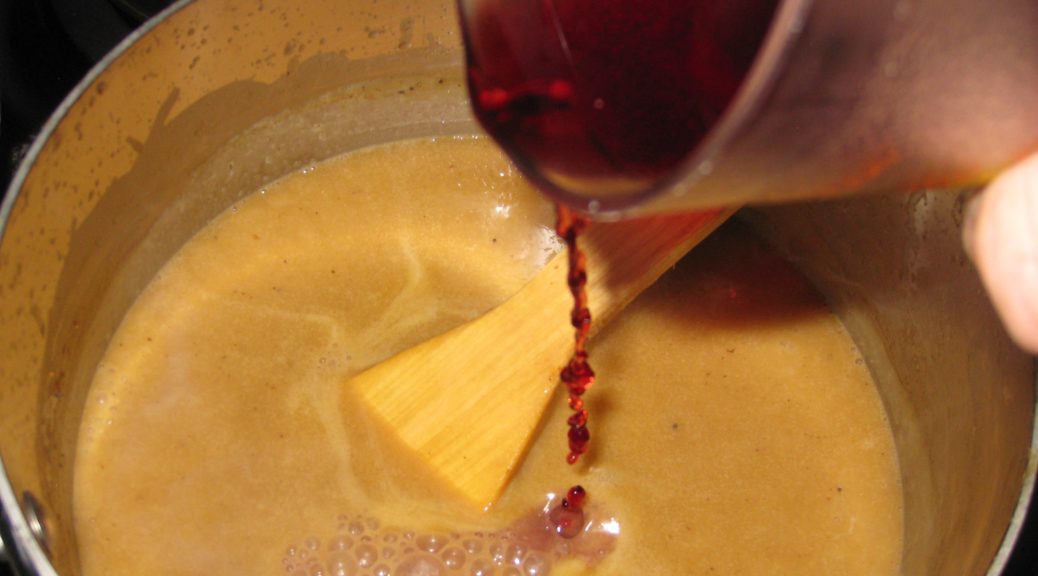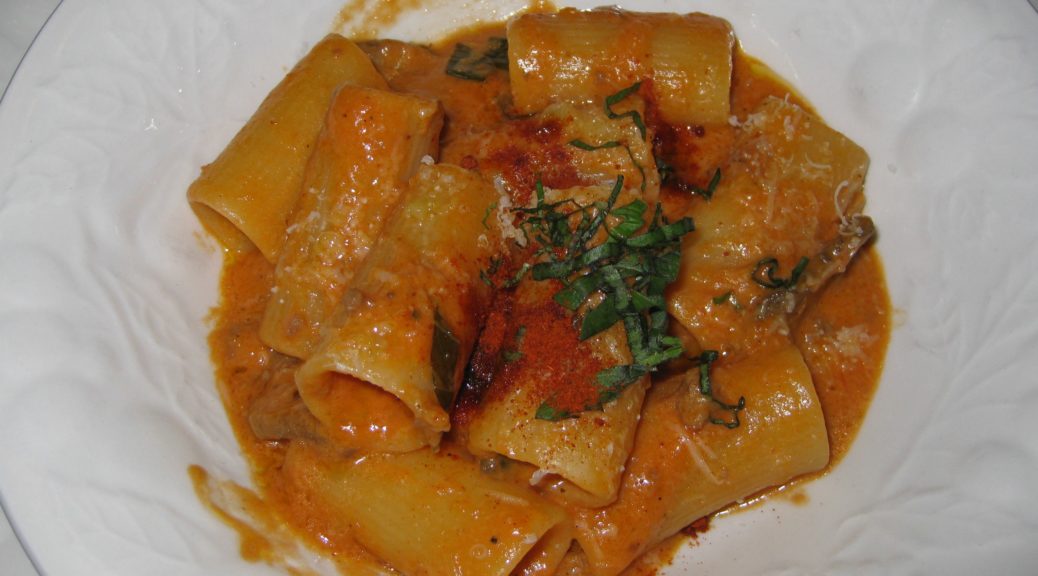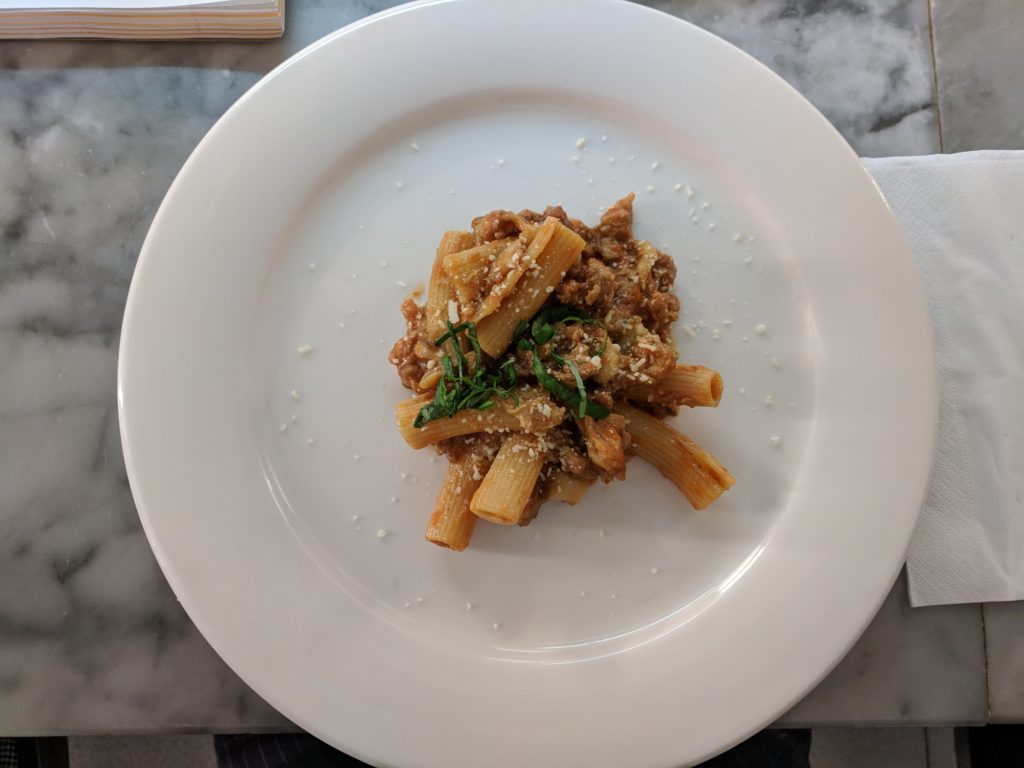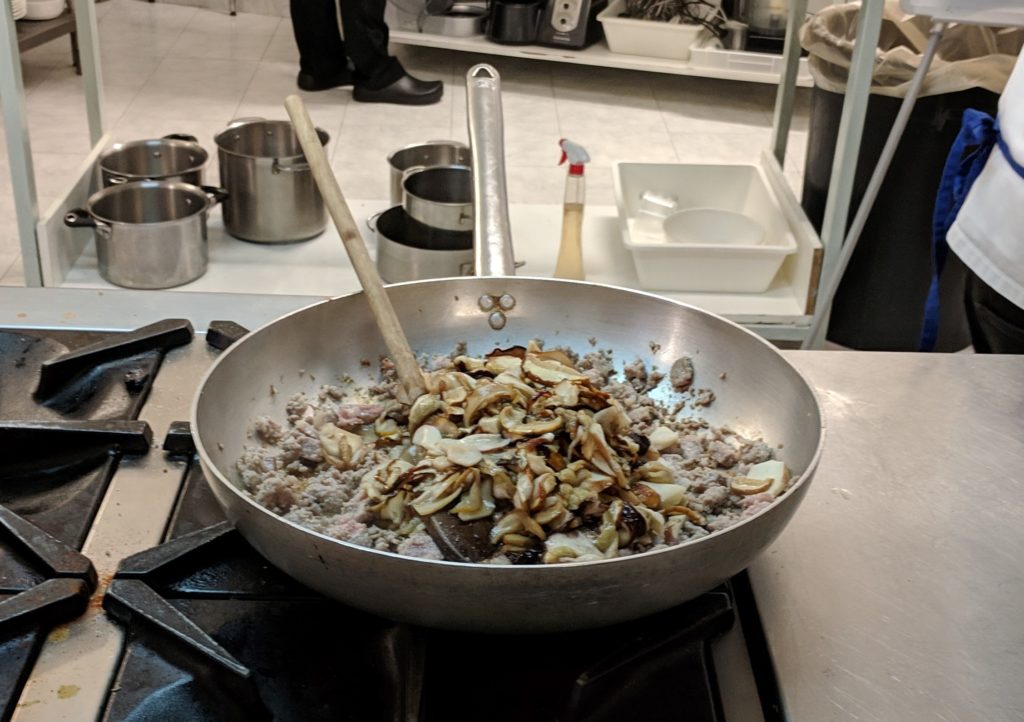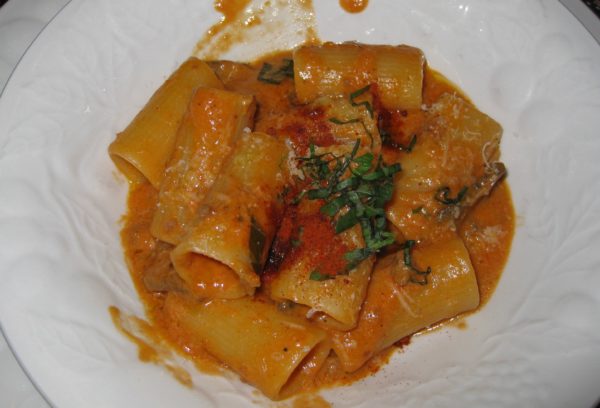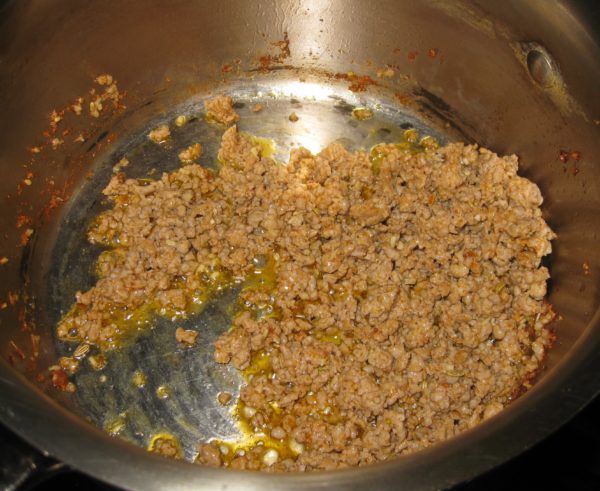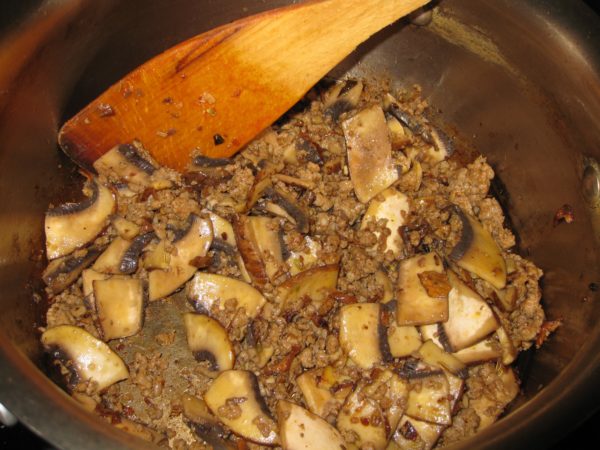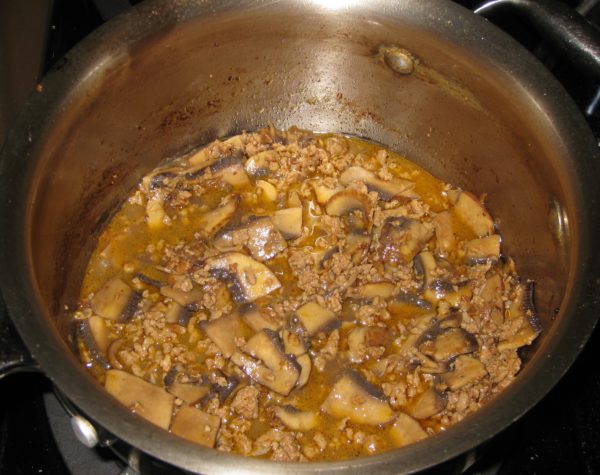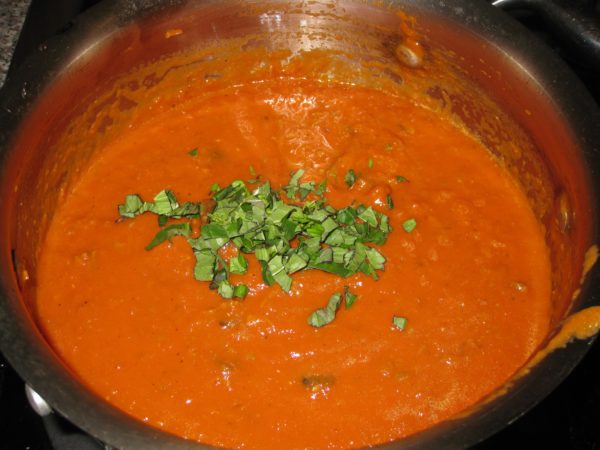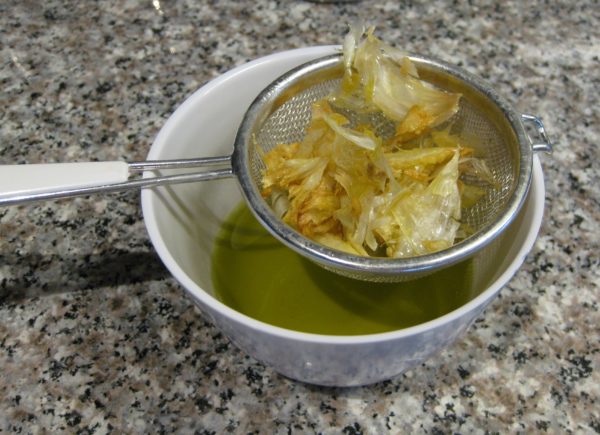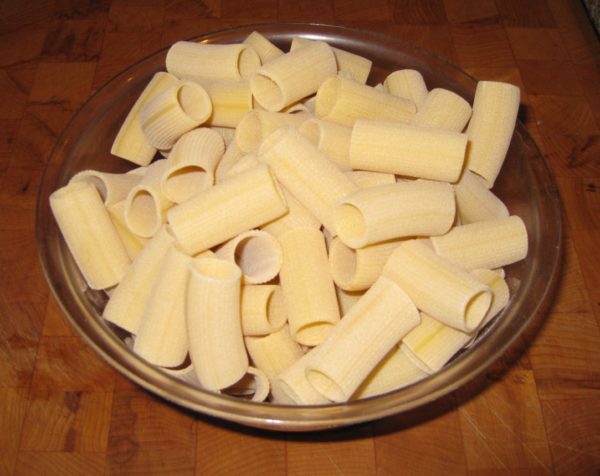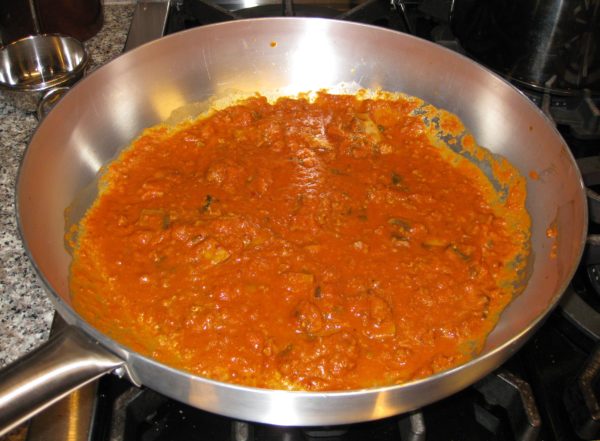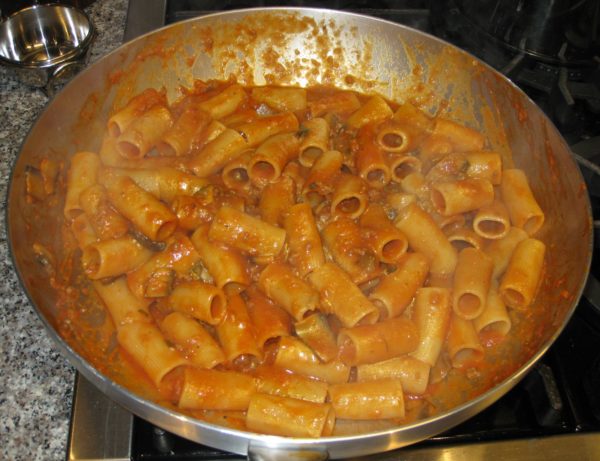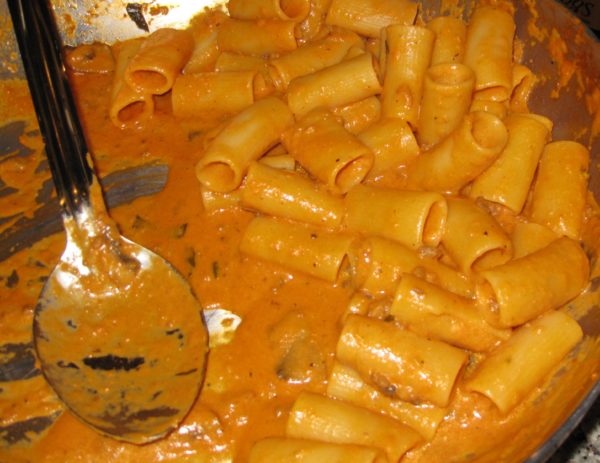November 7, 2019
I’m not much of a turkey person.
If it were up to me, I’d probably never make turkey, except for the fact that turkey is a GREAT excuse to make killer stuffing and gravy.
OK, OK, those of you who know me know that I’m enough of a traditionalist that I’d probably still make turkey on Thanksgiving, with or without stuffing and gravy, because it’s, well, traditional.
Turkey aside, though, I absolutely LOVE stuffing and I LOVE gravy.
After Thanksgiving, I carefully hide the leftover stuffing in the fridge and keep it all for myself. There usually isn’t much leftover so I get maybe two days of snacking on cold stuffing. And it has to be cold, not warm, with a bit of added salt because the taste of salt is dulled by the coldness of the stuffing.
Click HERE to join our mailing list and you’ll never miss a recipe again!
As for the gravy, when I was a kid, I liked gravy so much that I would stir enough into my mashed potatoes that they became runny and spread out over my plate! I don’t do that anymore but I still love gravy.
I love gravy so much that I roast poultry specifically to make gravy then discard the poultry because I’ve browned it to a fare-thee-well to get a really flavorful gravy. But I only do that once a year—on Thanksgiving—hence the name Thanksgiving gravy.
When I was growing up, my parents hosted Thanksgiving dinner. My Aunt Margie and Uncle Joe hosted Christmas Eve dinner.
On Thanksgiving, while my mother and Aunt Margie were getting everything ready to bring to the table (everything included a full Italian meal with sausage, meatballs, lasagna, etcetera alongside a full traditional American Thanksgiving meal!) my Aunt Mamie would make gravy from the pan drippings.
Follow us on your social media platform of choice
![]()
![]()
![]()
From my current vantage point, however, there is a very limited amount of gravy that can be made that way, otherwise it doesn’t have enough meaty goodness. Though I have to say that Aunt Mamie did a great job of making gravy. Hers was the one that I most often stirred into my mashed potatoes.
The search for lots of meaty-tasting gravy is what got me started on the path of roasting poultry a few days in advance simply to make a brown stock to use as the base for my gravy.
I guess, in reality, my gravy is more of a variation on French brown sauce (Sauce Espagnole) with added pan drippings than traditional American-style gravy but it packs the flavor that I expect from good gravy.
If there’s any leftover gravy, I warm it with some cream and sautéed mushrooms and then gently reheat leftover turkey in the sauce.
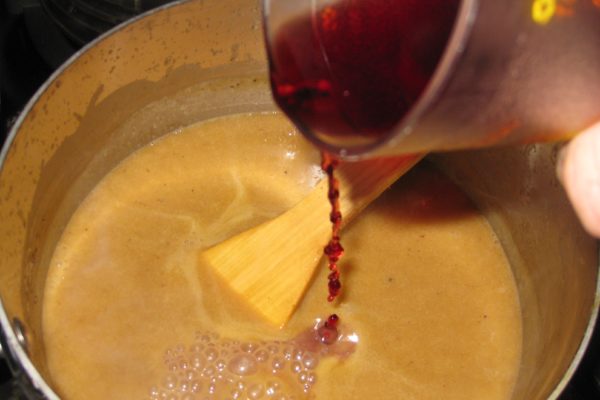
| Prep Time | 30 minutes |
| Cook Time | 11 hours |
| Passive Time | 12 hours |
| Servings |
cups
|
- 2 1/2 pounds turkey parts such as necks and wings (or chicken parts or Cornish hens)
- 1/2 cup extra virgin olive oil divided
- garlic powder to taste
- 2 carrots thinly sliced
- 3 stalks celery thinly sliced
- 2 onions sliced
- 4 cloves garlic sliced
- 1/2 cup red wine
- 10 cups water approximately
- 1 fresh bay leaf
- 1 tablespoon fresh rosemary or 1 teaspoon dry
- 3 fresh sage leaves
- 5 sprigs of parsley leaves only
- 2 whole cloves
- Parmigiano Reggiano cheese rind if available
- 1/2 teaspoon whole black peppercorns
- Brown Stock see above
- 3/4 cup flour
- 3/4 cup fat from top of brown stock
- 1/2 cup red wine
- Salt and pepper to taste
- drippings from roast turkey
Ingredients
Brown Stock
Gravy
|

|
- Cut the turkey or other poultry into chunks. Put the cut-up turkey into a heavy roasting pan. Mix with ¼ cup of extra-virgin olive oil. Season generously with garlic powder and salt.
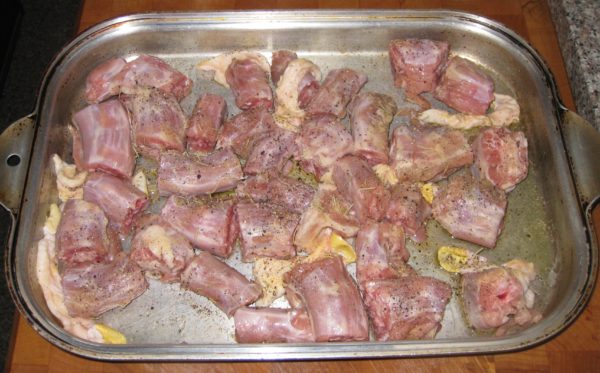
- Roast the turkey at 425°F until dark brown, turning often, 1½ to 2 hours.
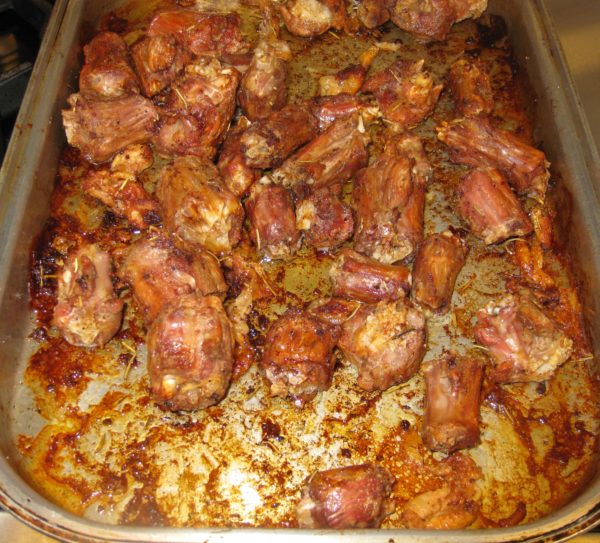
- Meanwhile, in a heavy-bottomed stock pot, large enough to hold all the ingredients, sauté the carrots and celery in ¼ cup of extra-virgin olive oil over high heat.
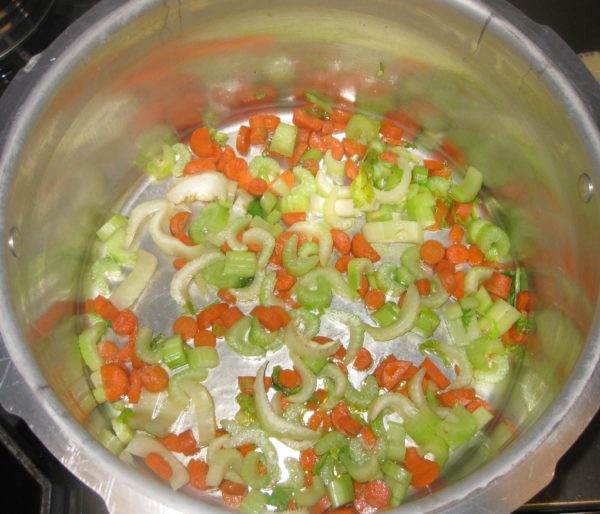
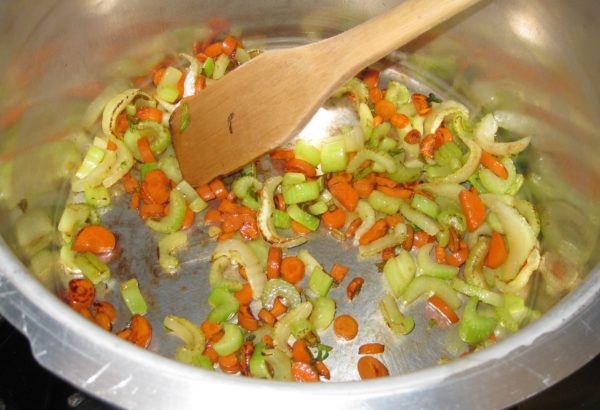
- As the carrots and celery begin to brown, add the onions and garlic.
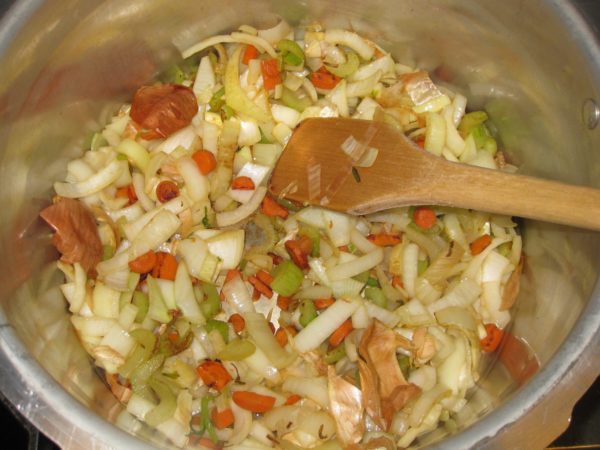
- Continue cooking, adjusting heat to medium if necessary, to create nicely browned vegetables and fond without burning.
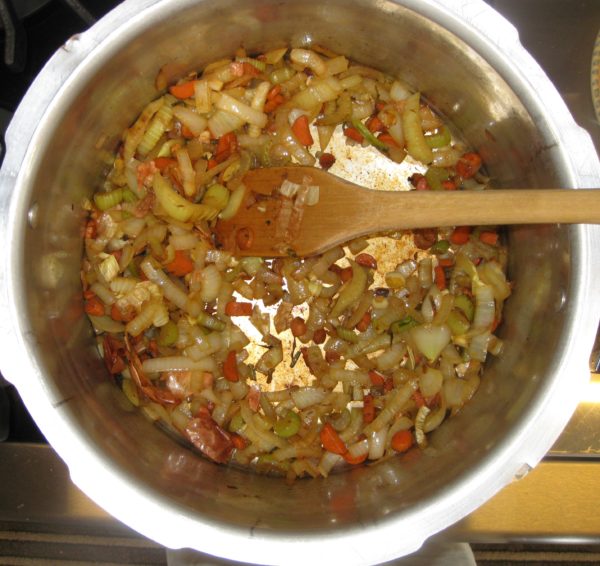
- When the vegetables are brown, add 1/2 cup of red wine and 1 cup of water to stop the cooking and set the pot aside until the turkey is ready.
- When the turkey is brown, add it and any pan drippings to the stockpot with the vegetables.
- Using some of the water, deglaze roasting pan and add the liquid to the stockpot. All these brown bits are important for flavor.
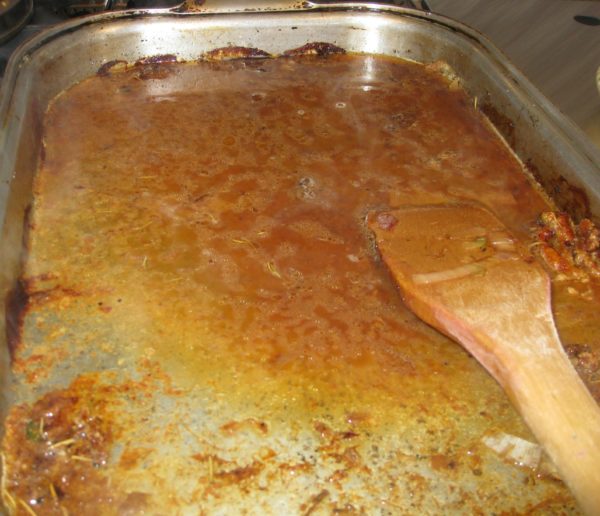
- Add the bay leaf, rosemary, sage, parsley, whole cloves, Parmigiano Reggiano cheese rind, if using, black pepper, and enough water to cover generously. Bring to a simmer and simmer, partially covered for six hours, stirring occasionally.
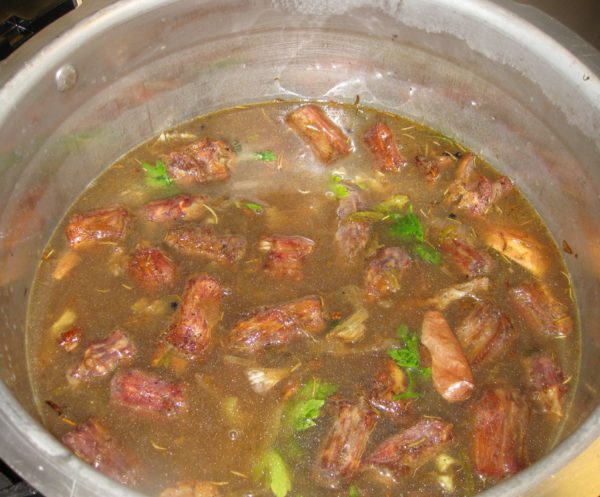
- Strain and refrigerate the stock. The stock may be made up to three days in advance.
- Skim the fat from the top of the stock. Heat the fat to cook off any water. Measure ¾ cup of melted fat and reserve. Add butter, if necessary, to make ¾ cup.
- Gently boil the skimmed stock to reduce it to about six cups, if necessary.
- Meanwhile, in a heavy-bottomed saucepan, gently brown the flour in the fat from the stock.
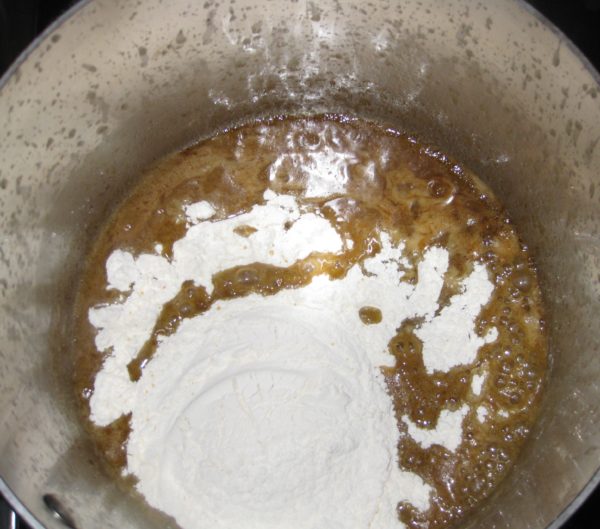
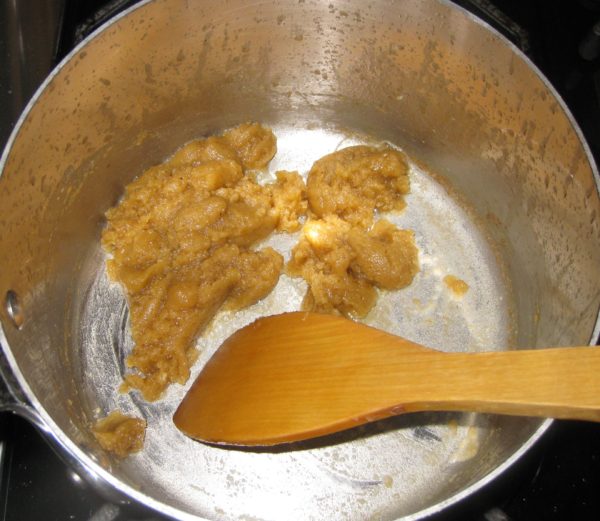
- Add the six cups of hot stock, approximately ¾ cup at a time, stirring well after each addition, to avoid lumps.
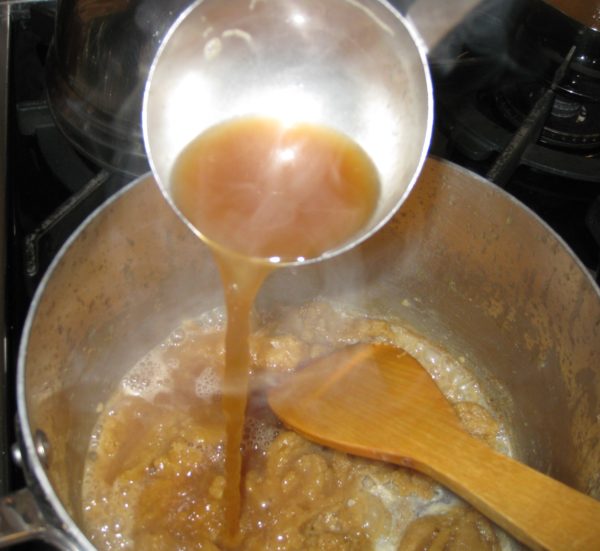
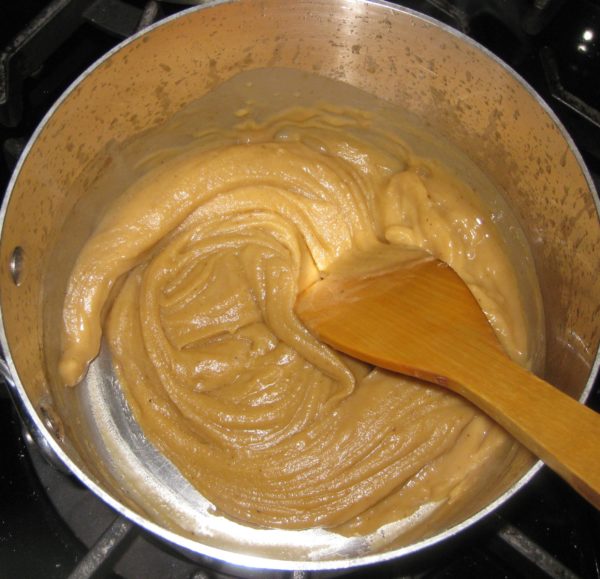
- After all the stock has been added, bring to a simmer. Add the wine. Season with 1 teaspoon salt and pepper to taste. (The drippings from the turkey can be fairly salty so the gravy should be under-salted until the final adjustment of seasoning.)
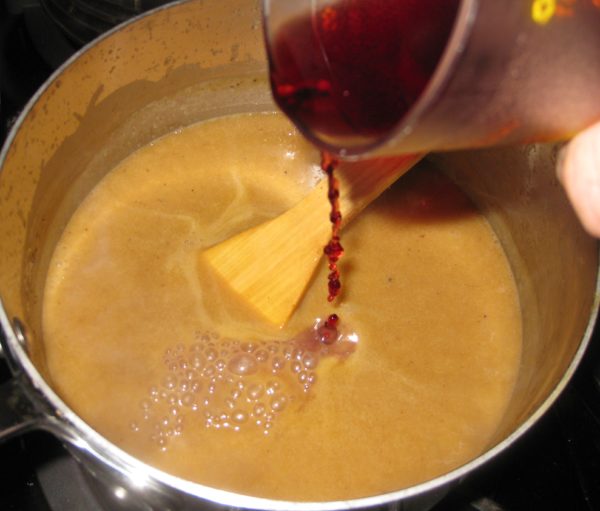
- Simmer gently till thick, approximately 2 hours, stirring frequently. Set aside, covered, until the turkey is ready.
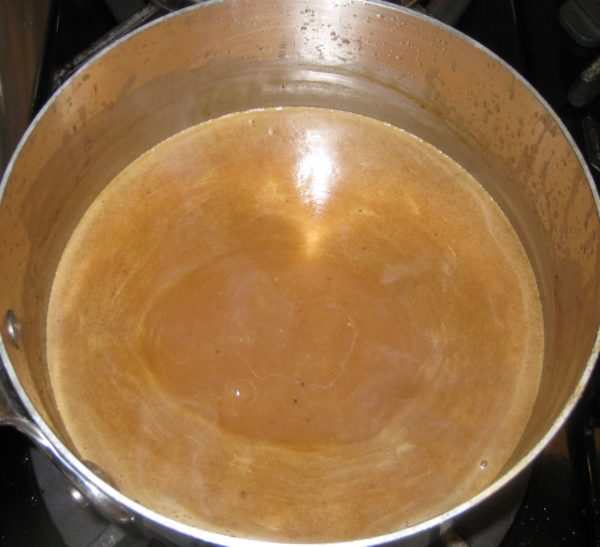
- After removing the turkey from the oven, deglaze the roasting pan with water. Skim the fat from the deglazing liquid. Pour the defatted drippings into gravy and simmer briefly to achieve the desired consistency. Adjust seasoning.
Copyright © 2019 by Villa Sentieri, LLC. All rights reserved.

